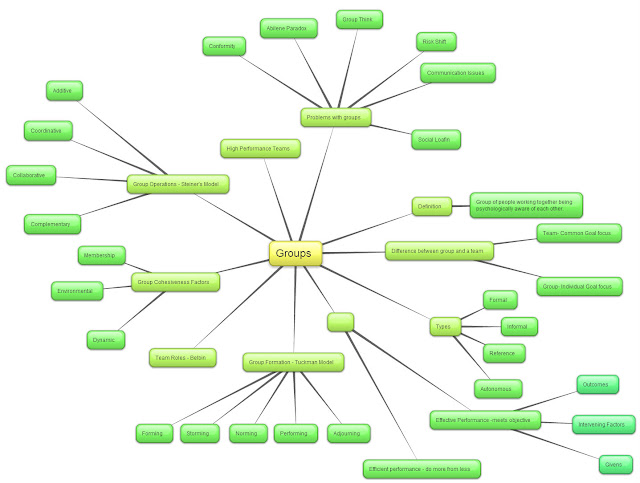Sorry for the fact that I haven't posted anything in a while. Been super busy with work and stuff. Hope to make these summaries more often. Took a few minutes to summarize an EM answer :
This answer summary is off the marking scheme of the March 2011 EM paper for question 7 (a) : 10 marks. The answer has been generalized and abstracted without the context of the case so that it can be replicated verbatim in similar questions having different cases.
Problems that a project could face without good project planning
<intro>
Project planning involves the following:
- Clearly defining the objectives of the project
- Setting realistic schedule, budget and resource estimates for the project
- Feasibility study for the project
- Defining the RnR of the project team
- Defining the monitoring & control mechanism for the project
</intro>
<hint>Once the introduction is done it is up to the person answering to describe the possible outcomes (with impact) of not having the aforementioned 5 points</hint>
- Not having clear objectives would allow for scope creep. The client will alter the specifications of the project since no clear objectives have been defined and signed off by the client. This would alter the scope of the project and thereby affect the timely and budgeted delivery of the project.
- Not having clear objectives will cause confusion within the project team. Scope creep and frequently changing requirements would cause team members to become demotivated, decreasing productivity and hence affecting the overall progress of the project.
- Unclear objectives hinder the implementation of strong change management control mechanisms.
------------------------------------------------------------------------------------------------------------
- Without good planning a baseline budget, project schedule and resource allocation plan cannot be created. This would lead to the illogical sequencing of project tasks, inefficient utilization of resources, adverse budget variances and unrealistic estimations, all of which, in turn would result in project failure.
- Without having a proper baseline budget, project schedule and resource allocation plan, the project manager would not be able to track/ monitor and control the project in terms of time and budget (No proper feed-back/forward mechanism). This would result in lags in delivery of artifacts, adverse buget variances and idle/burnout resources. The absence of a resource allocation plan would create communication issues and conflict within the group as a result of unclear RnRs of the project team.
------------------------------------------------------------------------------------------------------------
- Not conducting a feasibility study would mean that the project is open to emergent risks. The project manager would be unaware of the potential risks and problems with regards to the project in order to come up with a contingency plan. The project would be reactive to risk and not proactive.
- Not conducting a feasibility study would not allow the project manager be aware of the impact of the project on various stakeholders. If the project has an adverse impact on the stakeholder, and the stakeholder is powerful, this stakeholder can negatively affect the delivery of the project by hindering project activities.
- Without a feasibility study, the project manager will not be able to assess the various effects of the project on the local environment, community and society at large. If the project is detrimental to either of the 3, then it must not be executed.
------------------------------------------------------------------------------------------------------------
- The lack of defined RnRs for the project team would result in activities being duplicated or missed. Duplicated and missed activities compromise on the timely and quality delivery of the project respectively.
- The project team will lack structure since the absence of an RnR matrix will mean that there will be no team member responsible per work package. This also would create poor communication channels within the team and towards stakeholders. This would mean that the team and stakeholders would not be on the same page at any given time, inevitably resulting in confusion within the project and compromised triple constraints.
------------------------------------------------------------------------------------------------------------
- Without developing appropriate control systems for the project there is a strong possibility that the project will go overboard in terms of time and budget and under-deliver in terms of scope. Control systems enable the project manager to keep track of the triple constraints in relation to the initial baseline budget, project schedule and SLA and take preemptive action when an adverse variance is observed.
------------------------------------------------------------------------------------------------------------
<conclusion>Conclude the answer by saying that the aforementioned problems arise as a result of poor project planning practices.</conclusion>
<hint>The key learning in this question would be the 5 activities that are required in the planning stage of a project</hint>
Until next time....Happy studying folks !!!



